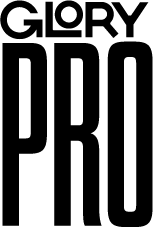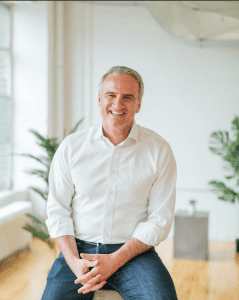[vc_row][vc_column][vc_column_text]Is the Confidence Gap holding executive women in the workplace back?
Being a woman in an executive role is no easy feat.
According to a 2022 study by KPMG, “67 percent of high-performing executive women said that they needed more support building confidence to feel like they could be leaders in their industry.”
Even breaking into executive leadership as a woman is an uphill climb—a Hewlett Packard internal report found that women apply to roles when they recognize they’re 100 percent qualified, in comparison to men who apply when they have 60 percent of the qualifications. Women also experience fear of breaking into executive and c-suite positions; studies have found that 75 percent of female executives across industries have experienced imposter syndrome in their careers, making it hard for them to believe in themselves enough to have the career they dream of.
These statistics illustrate a troubling picture of the Confidence Gap—a phenomenon coined by Dr. Russ Harris that aims to explore why women are less self-assured than men in the workplace, leading men to outperform women, even when they don’t have as much knowledge as women.
The Confidence Gap persists, but there are powerful tools executive women can utilize in order to combat it. Setting yourself up for success and learning to deal with setbacks and failures in a mindful way are the keys to the kingdom. Let’s dig in:
Setting Yourself Up for Success
If you’re looking to hit the ground running in your new role (or need a refresh in your current one), we recommend that you start by thinking about how you can introduce yourself mindfully. New executives can bring unease to the team, so investing in relationships is important. Share your goals, be vulnerable, and let the team in. If you’ve been working at your company for some time, think about how you want to introduce yourself to new hires. Once you’ve made the initial connection with your team, a great second step is to learn the organization by spending time with all levels of each team, from the individual contributor all the way up to the VPs. It’s the fastest way to get exposed to the inner workings of the business at a deeper level.
Once you understand how the business is operating and who might be responsible for what, a Diversity, Equity, & Inclusion (DE&I) strategy should be the next thing on your radar. Take action and implement DE&I recruitment practices. This is the future of business, and it’s a clear and effective way to make an impact. Hiring a DE&I consultant can support you in diversifying the company in terms of thought, gender, and representation.
At this time, you should also be Identifying any glaring weaknesses in the business, operationally or otherwise, and ensure you make timely decisions. This is a great way to establish trust and confidence quickly with your team. You can also establish further trust and confidence by being visible, something that is a bit more difficult to achieve within our virtual world today. Turn your video on in Zoom calls, or if your company is implementing a hybrid model, show up to the office, let people see you, stay in communication, and always share your observations and subsequent strategies. Even if it’s at a very high level, the team is looking for leadership, guidance, and, most importantly, they want to feel a sense of action.
RELATED: Koble Founder Swati Matta is Offering Postpartum Care to Families
Dealing with Setbacks and Failures
Setbacks and failures go hand-in-hand with success. If you want to celebrate your successes, you’ll have to come to terms with the roadblocks that got you where you are.
To help yourself through, try creating a failure resumé. You can do this by making a copy of your professional resumé and adding your “failures” to your timeline. Which schools did you apply to but didn’t get accepted? Which job interviews did you misstep in? Were there any jobs you didn’t apply for that you really wanted? Upon completion, you’ll want to review in the moment and start looking at each failure subjectively. What did you learn about yourself during those times? How did you grow or see yourself differently? How did you unlearn limiting beliefs? After some time has passed, you should revisit your failure resumé. Is there something recent you can update? Did new learning come out of a past failure? This will help you stay true to who you are and help you accept yourself through your past and future hurdles.
—
Bridging the Confidence Gap will never be easy for executive women, but when equipped with the right tools, it does become easier. Try these tips for yourself and share your experiences with the other powerful women leaders in your life.
Let’s pave the way for change.
Alisha Adams and Tess Sloane are the co-founders of Eleven Eleven Talent Collective and Chapter Two Meditation. [/vc_column_text][/vc_column][/vc_row]













